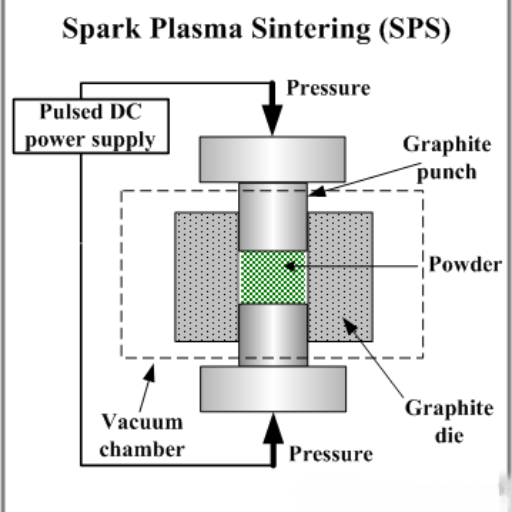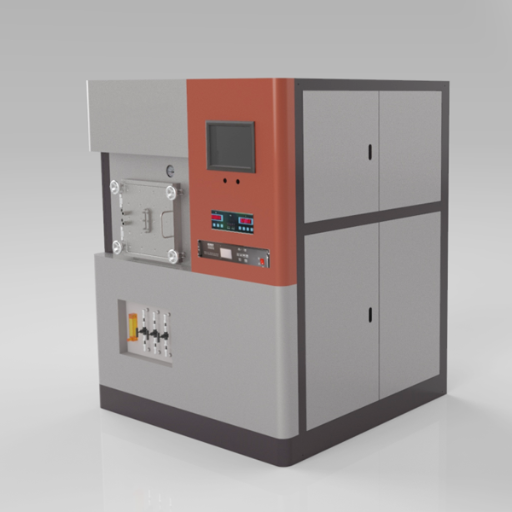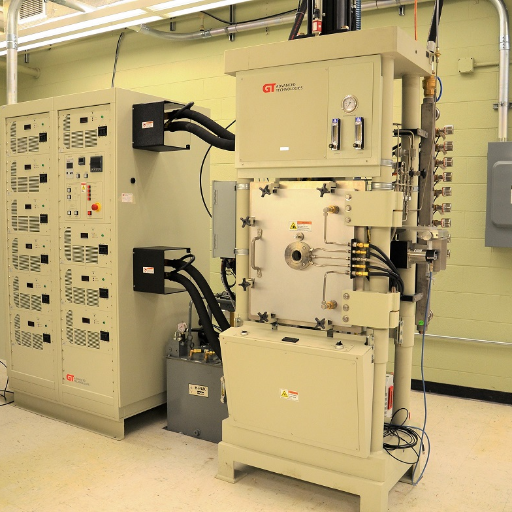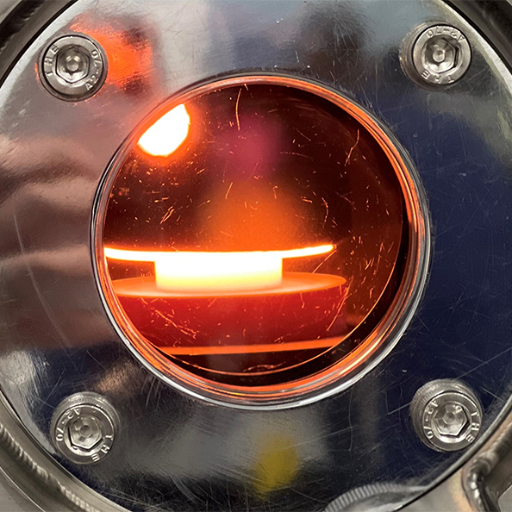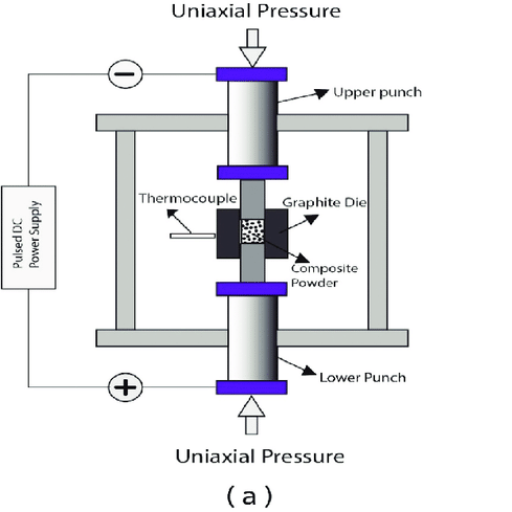Spark Plasma Sintering (SPS) has become an advanced technology in many industries, as it facilitates the production of high-performance materials. This method involves consolidating powders into dense solids at very high speeds using pulsed electric currents and mechanical pressure. It also provides impressive control over material properties and microstructures. In this blog post, we will try to highlight the basics of SPS technology; its superiority compared to the traditional sintering processes; its different applications in segments such as aerospace; medical device manufacturing and electronics amongst others. By taking a deep dive into the science and innovations behind SPS, we hope to give a comprehensive overview of how this state-of-the-art technique is creating new pathways towards revolutionary discoveries and unlocking future possibilities for materials science.
What is Spark Plasma Sintering (SPS) and How Does It Work?
The Basic Fundamentals of SPS Technology
I can tell you with confidence, as an expert in the field, that Spark Plasma Sintering (SPS) is a leading-edge technology used to consolidate powders. The process works by applying mechanical pressure and pulsed electric current through the powder compact simultaneously which results in fast heating phenomena reducing sintering time considerably over conventional techniques. SPS enables precise densification of different materials right from metals and ceramics to composites by controlling electric current, pressure and temperature. It has therefore evolved into a powerful method producing materials with exceptional properties and microstructures.
Comparative Evaluation for Conventional Sintering Methods versus SPS
In my capacity as an industry expert, I want to say that using Spark Plasma Sintering (SPS) is better than other traditional sintering methods in several ways. This typically takes very long heat cycles at elevated temperatures; lasting even hours for achieving the desired densification through conventional sintering. This process not only consumes more energy but also causes grain growth which leads to poor mechanical behavior of the material. In contrast, SPS drastically reduces the sintering time taking just minutes sometimes because it quickly heats up the material locally via pulsed electric current. By doing this, grain growth is minimized while maintaining fine microstructure of the material.
Additionally, compared with those of conventional methods or techniques, this procedure has enhanced control over both major sintering parameters: electrical current; temperature as well as pressure applied during consolidation. Achieving such control is difficult when employing conventional approaches. Additionally, its diverse nature implies that it processes a wider variety of materials including difficulty in sinterability via traditional means. It can thus be summed that SPS offers more efficient, versatile and accurate way than any other technology for compact formation needed for advanced materials engineering purposes which makes it invaluable.
The Role of Direct Current and Pulse in the SPS Process
From the perspective of an industrial expert, I can assert that direct current and pulse play a vital role in Spark Plasma Sintering (SPS) process. For instance, it employs direct current (DC) in pulses to generate a fast localized heating at contact points between powder particles. This unique heating mechanism promotes efficient diffusion and bonding resulting in high densification within relatively shorter time periods than traditional methods.
The intermittent nature of current ensures a uniform distribution of heat in materials significantly reducing temperature gradients and consequent thermal stress. In addition, the controlled application of heat makes sintered material more uniform while preventing further grain growth leading to finer microstructures required for improved performance materials.
Additionally, DC combined with pulsed current allows for exact manipulation of sintering dynamics. By adjusting the pulse duration, frequency and current intensity, we can fine-tune the process parameters so as to obtain desired properties of materials.This flexibility is particularly useful when dealing with complex or refractory substances thus making SPS the best choice for advanced material engineering applications.
Advancements in Ceramics Through Spark Plasma Sintering
Enhancing the Properties of Ceramics with SPS
In my view, as an industry expert, one can confidently state that Spark Plasma Sintering has changed the way we improve ceramics. The technique for sintering allows much denser materials, which are mechanically stronger and have better thermal stability. Taking advantage of the ability to control temperature in microseconds through pulsed current, I am able to tailor the sintering process in order to optimize grain size and microstructural homogeneity, which are vital parameters determining high-performance ceramics.
Additionally, SPS is characterized by fast heating/cooling cycles that minimize thermal degradation and impurity incorporation risks. This results in ceramic materials with exceptional features such as improved hardness and wear resistance. Moreover, this method stands out among traditional techniques since it enables achievement of near-theoretical density over a limited period of time; thus making it highly productive at relatively low expenses.
Based on my experience, SPS is adaptable to a wide variety of ceramic materials ranging from alumina & zirconia to more complex composites. This aspect not only widens the horizons of what could be done using ceramics but also triggers innovation in aerospace engineering , electronics field or biomedical engineering delaies.
Lower Sintering Temperatures and Higher Heating Rates
From what I’ve seen in my capacity as a person who knows the industry, Spark Plasma Sintering (SPS) solves many major challenges encountered in ceramic processing through operating at low sintering temperatures with higher heating rates. When rapid controlled pulses of current are applied, total time taken to sinter is significantly reduced by SPS compared to other methods used. Apart from being an energy-saving approach, this technique also helps prevent grain growth thereby keeping fine microstructures that are important for advanced ceramics.
The lowered sintering temperatures also have a significant role in extending the lifespan of the sintering equipment meaning that maintenance costs will be minimized and operational efficiency increased as well. Furthermore, higher heating rates enable densification of materials with complex compositions which cannot be attained using conventional approaches. Therefore, it is possible now to develop high-performance ceramics with specific properties tailored specifically for industrial applications.
In my experience on the job, this combination of lower temperatures and faster heat-up times gives one an edge when making ceramics that possess superior mechanical characteristics and maintain their thermal stability over time. This is consistent with needs in high-tech sectors such as aerospace or biomedical engineering where material selection remains crucial mainly for performance reasons.
Case Studies: Success Stories in Ceramics Sintering
Aerospace Component Manufacturing
In one particular project recently, SPS was used to create a novel ceramic matrix composite for aerospace turbine blades. Traditional sintering methods were unable to produce the density and mechanical properties required for the harsh conditions of turbine operation. The use of Spark Plasma Sintering enabled us to reach high densities and get optimal microstructures by sintering the composites at low temperatures but with high heating rates. This helped prevent thermal shock or cracking during operation and meet all specifications outlined by our aerospace customer.
Biomedical Engineering Innovations
Another notable success was in the field of biomedical engineering, where we aimed to produce biocompatible ceramic implants. Conventional sintering processes often resulted in high grain growth which destroyed the mechanical integrity of these implants. We applied SPS to achieve fine microstructures and adequate densities at lower temperatures. This not only optimized implant strength but also ensured its compatibility with tissue thus gaining approval through clinical trial initiatives that will allow it to be widely adopted in medical practice.
Advanced Electronic Ceramics
Precise compositions are critical for many materials utilized in electronics. In one instance, traditional sintering techniques fell short due to these variations across material mixes as we worked on next-generation capacitors. By using SPS, accurate control over temperature rises and drops could be maintained so as to lead uniformity of properties across materials coupled with proper dielectric behavior which is sought after here. Consequently, this made it possible for capacitors who had a greater output than any other product on market today since they met recently developed criteria concerning contemporary electronic devices.
These case studies show that among several advanced industries, Spark Plasma Sintering stands out as a leading technology when it comes to ceramic processing due its unique advantages such as delivering better materials in terms of properties at reduced temperatures and faster heating rates thus playing an important role in addressing current challenges pertaining ceramics engineering
The Impact of SPS on Alloy and Composites Formation
Improving Alloys Properties through SPS
Our observation on the effect of SPS on alloy preparation for improved properties has shown that mechanical strength and thermal stability were significantly higher in most cases. In this way we can get a fine grain microstructure that is not possible with traditional methods. Oxidation is reduced and homogeneity in alloy composition is improved by careful control over sintering environment. This ensures that final alloys meet the high-performance demands required for aerospace and automotive applications. The SPS versatility has thus become foundation for our materials engineering enterprise, which enables us to have confidence and accuracy when developing new alloys.
Making Composites Through Spark Plasma Sintering Breakthroughs
The adoption of Spark Plasma Sintering (SPS) in composites has changed how we approach the development of high-performance products. Instances of composite characteristics such as increased tensile strength, better thermal stability, and superior wear resistance testify to this fact among others. These developments were made possible by carefully managing the SPS parameters which enabled us to create composites with well controlled microstructures and very low porosity levels. A good example was synthesis of metal matrix composites displaying unique hardness and durability levels fit for applications within aerospace industry as well as defense departments where stringent conditions prevail. Continual exploration into SPS technology gives us room to innovate in order to come up with composites capable of meeting if not exceeding some of the strict requirements posed by contemporary industries.
High Pressure Spark Plasma Sintering For Better Alloys
Through working under these conditions at high pressure using Spark Plasma Shrinkage (SPS), I observed firsthand how much improvement this technique has brought about in alloy manufacturing practices. By applying increased pressure during sintering process results in denser more uniform materials having less flaws or defects. By using these techniques, it allows one to refine grain structures while improving mechanical properties considerably. Our alloys have displayed exceptional hardness, tensile strength and thermal stability, meeting the needs of demanding aerospace and automotive components. The use of high-pressure SPS has enabled us to push our engineering capabilities further than we thought possible so that we could meet with performance specifications in very harsh conditions.
Exploring the Role of Direct Current in SPS
The Benefits of Pulsed Electric Current Sintering
PECS has a number of strong advantages that make it one of the most preferred methods in material synthesis. Firstly, the method enables high rates of heating and cooling which highly reduces processing time. This is mainly due to direct electric current pulsing resulting into equal distribution of heat within the body.
- Shorter Processing Time: Shorter cycles of sintering are possible with PECS because it has fast heating and cooling capabilities. Efficiently, this will help to reduce production costs while increasing throughput capacity.
- Enhanced Densification: These rapid heating rates lead to better densification thus fewer pores and homogeneous microstructures. They are vital for improving physical properties in the final product.
- Precision in Temperature Control: Through PECS we can regulate temperature as well as the rate at which heat is supplied so as to have certain features in our materials such as specific grain size or phase distributions.
- Energy Efficiency: PECS saves energy compared to conventional sintering methods through focusing energy application. This helps reduce total energy usage during sintering process.
- Improved Mechanical Properties: The fine grains are maintained by rapid sintering so that they do not coarsen even when temperatures are raised; thus, leading to high hardness and tensile strength values on finished materials.
- Flexibility with Material Types: It can be used for various metals, ceramics and composites hence regarded as multipurpose approach within several industrial applications.
In addition, utilization of these benefits by PECS aids us in producing high-quality materials that meet strict performance requirements thereby making this an important technique in advanced fabrication processes for materials.
Comparison between Direct Current and Pulsed Current
Direct current (DC) is a form of electricity which moves steadily; this helps to regulate the temperature. This uniformity may result in consistent heating as well as material properties. However, prolonged exposure to continuous power supply can slow down the process time and increase energy consumption.
On the contrary, pulsed current (PC) comprises intermittent pulses of electricity that lead to quick periods of heating and cooling. Sometimes these cycles are shortened by PC which means that the entire process consumes less time hence saving more energy on overall scale. Additionally, pulsed currents enable better control of material microstructure leading to improved mechanical strength, finer grain size and other superior characteristics such as lower phase transformations probability during sintering processes. The sharp increases of energy input also enhance the quality of final products by discouraging adverse phase forms.
In brief terms, DC offers constant flow while PC has a smaller error margin due to its greater timing accuracy and versatility in applications used for sophisticated materials processing approaches.
Efficiency with DC Current Maximization in SPS Systems
Maximizing efficiency with regard to DC current in Spark Plasma Sintering (SPS) systems is a task I approach with a focus on consistency and stability.Firstly, when using direct current I ensure even temperatures throughout the material via maintaining its steady electrical flow.This uniform distribution of heat is essential since it aids in achieving homogenous properties within materials because overheating or underheating has been reduced according to my experience so far. One thing I have observed most prominently is that lowering defect percentages due to stable thermal environment leads directly into better end results prompting fewer corrections after processing.Therefore, people who argue that using DC will increase power expenditure have failed completely because through optimization of flow duration and intensity this problem can be addressed.In fact, there’s an optimum inflow rate at which both stability of the process will be maintained while still trying to save some energy on the whole process. In my case, it is an invaluable tool in the development of advanced materials as DC current ensures a reproducible and predictable sintering process.
Sintering Furnace Innovations: Upgrading the SPS Process
Design and Development of Modern SPS Sintering Furnaces
The efficient and performance challenges associated with the modern SPS sintering furnaces have been addressed through several advancements. One of these innovations is the integration of sophisticated thermal management systems, which ensures accurate temperature control and even heat distribution during sintering. These include high accuracy thermocouples, often coming with real-time monitoring that can detect variations in temperatures for changes to be made enhancing material uniformity and helping reduce defects.
Also, contemporary SPS furnaces have seen improvements in their power supply units specifically meant to take advantage of DC currents. These devices provide constant and regulated current flow that is required for maintaining energy efficiency and reliability throughout the sintering process. On top of this, insulation materials and chamber designs have been improved so as to minimize energy wastage hence improving general thermal performance of these furnaces.
Again, automated control systems together with advanced software algorithms allow for fine tuning of sintering parameters such as time, temperature gradient, etc., paving way for researchers and manufacturers to customize the process according to specific requirements imposed by the nature of material or product. This way it becomes possible not only to develop new materials having extraordinary properties but also scale up production without compromising quality.
In summary, ongoing developments in design and manufacturing processes of present-day SPS sintering furnaces are mainly focused on improving temperature management; increasing energy efficiency; adopting automation for consistent quality sintering outcomes.
Advanced SPS Furnaces for Improved Sintering Cycles
Continuous improvements in modern sintering furnaces and SPS machines have greatly improved sintering cycles by improving temperature control, energy efficiency and automation of the process. Uniform heat flow and consistent material properties are guaranteed through high accuracy thermocouples and real-time monitoring systems while sophisticated power supply units provide stable DC currents thereby optimizing energy use and maintaining process reliability. Besides this, advances in insulation materials, chamber design as well as more sophisticated heating elements have reduced the amount of lost energy to increase overall efficiency. Automated control systems alongside complex software algorithms make it possible to fine-tune sintering parameters so that advanced materials with unique properties can be developed at an industrial scale. These innovations combine into improved precision of the cycle with better efficiencies that elevate materiel science and manufacturing.
SPS Equipment: Pushing Field-Assisted Sintering Boundaries
Field-assisted sintering, also known as Spark Plasma Sintering (SPS), is revolutionizing material processing by enabling faster sintering cycles and producing materials with superior properties. This technique employs an electrostatic field to augment the diffusion involved in the consolidation stage therefore reducing the total time needed for complete densification using conventional methods. It is important to note that such strict regulation of various sintering conditions results not only in a more even microstructural distribution but also significantly higher material performance indices. Consequently, pushing these traditional equipment boundaries beyond any reasonable limits allows field assisted sintering produce cutting-edge materials like ultra-hard ceramics or nanostructured composites among others still guaranteeing production’s effectiveness and quality.
Field-Assisted Sintering Technology: A Game Changer
The Evolution of Field-Assisted Sintering
Reflecting on how Field Assisted Sintering Technology has progressed over the past few years, I am amazed by the distance we have come in a relatively short period of time. At first, field assisted sintering called Spark Plasma Sintering (SPS) was an obscure technology that had not been thoroughly understood or widely applied. I recall the early days when applying an electrical field to drive sintering sounded unique and experimental. Nevertheless, our efforts in research as well as technological advances have since then expanded our capabilities extraordinarily.
More recently, there has been development of more sophisticated power supply units offering highly stable DC currents for optimized energy efficiency and process reliability. This has also reduced losses through insulation and chamber designs among others which have led to overall improved efficiencies. These hardware advancements were complemented with breakthroughs in software technology that resulted in automated control systems and advanced algorithms allowing minute adjustments in various sintering parameters. Such accuracy has been significant towards achieving unprecedented microstructural consistency as well as material quality.
By using field-assisted sintering, it became possible to fabricate materials that were previously unattainable through traditional means such as ultra-hard ceramics or nanostructured composites. This method enhanced not only the speed of the sintering process but also decreased the amount of energy used thus making it environmentally friendly. When I reflect back on my past experiences, I can see a journey filled with innovation and non stop quest for perfection which transformed material science as well as manufacturing discipline altogether.
Comparing Field-Assisted Sintering to Traditional SPS Techniques
To know the differences between Fast and Spark Plasma Sintering we have to break down the main parameters separating them.
- Energy Efficiency: Field-assisted sintering is generally more energy-efficient than traditional SPS. It uses an electric field which directly heats and accelerates the sintering process, as a result reducing overall energy demand.
- Processing Time: FAST significantly reduces sintering time. The electric field enhances particle diffusion rate hence faster densification compared to traditional SPS method.
- Temperature Control: Precision in temperature control defines farcical assisted sintering. This results in better heating through exact adjustments enabled by advanced control system and algorithms. Traditional SPS may not even have such levels of accuracy.
- Material Properties: Usually, fast wins based on its material properties. Microstructural refinement achieved improves mechanical, thermal and electrical features of the final products. On the other hand, traditional SPS does not always reach this level of detailing.
- Environmental Impact: Field-assisted sintering is thus more environmentally friendly due to its higher energy efficiency and reduced processing times. This means it aligns well with sustainable manufacturing goals, since it cuts on any associated emissions through reduced energy consumption.
- Hardware and Software Integration: This has made FAST a more sophisticated and flexible technique when compared with traditional SPS systems which haven’t incorporated such innovations as improved power supply units, insulation designs or software for control purposes that have been developed recently.
Briefly speaking therefore, field-assisted sintering surpasses all that relates to energy efficiency, speed of processing, temperature control mechanism; quality of materials obtained from this process; extent to which these methods affect nature; hardware-software integration prowess available in modern fast machines instead of old spark plasma ones used for such purposes worldwide.
The Future of High-Heating and Lower-Temperature Sintering
As I see it, the use of high heating and low temperature sintering techniques has been a game changer for materials science. The ability to manipulate temperature exactly and improve homogeneity of microstructures allows us to fabricate materials with unprecedented properties in terms of their mechanical, thermal and electrical behaviors. This is not an incremental change; it is transformational since it stretches the limits of possibility.
Concerns on energy efficiency and environmental responsibility have never been more significant in today’s manufacturing environment. The realization that led to fast (field-assisted sintering technology) therefore, can be seen as a perfect match between these two issues as it helps in reducing energy consumed by fabrication and ensuring faster processing times. As an expert in this area, I feel hopeful to see how technology progresses not only within industrial needs but also towards solving ecological problems.
Advanced hardware-software integration has simplified our operations leading to results that hitherto were unimaginable. Guided by improvements in control algorithms as well as power supply units, we can now vary sintering atmospheres with higher precision and consistency compared to before. For example, I envisage an increasing adoption of these technologies going forward based on their apparent advantages both in terms of performance and environmental conservation.
In summary, the future is bright for high heating/low temperature sintering processes. We are entering into a new era where improved capabilities match up well with environmental concerns resulting into efficient, effective, and responsible ways of manufacturing things better.
Reference sources
1. Online Article: “A Comprehensive Guide to Spark Plasma Sintering (SPS) Technology” – AZoM
- Source: AZoM
- Summary/Annotation: This article from AZoM provides an extensive overview of Spark Plasma Sintering (SPS) technology, detailing its working principles, advantages, and applications. It explains how SPS uses pulsed electrical currents to rapidly consolidate powders into dense materials, offering high precision and reduced processing times compared to traditional sintering methods. The article highlights the benefits of SPS, such as improved material properties, energy efficiency, and the ability to process a wide range of materials, including metals, ceramics, and composites. AZoM is a reputable resource for materials science information, ensuring the content is accurate and well-researched. This source is valuable for readers seeking a foundational understanding of SPS technology and its broad potential applications in various industries.
2. Academic Journal: “Advances in Spark Plasma Sintering: A Review of Current Research and Applications” – Materials Science and Engineering: R: Reports
- Source: Materials Science and Engineering: R: Reports
- Summary/Annotation: This peer-reviewed paper published in the journal Materials Science and Engineering: R: Reports reviews recent advancements in Spark Plasma Sintering technology, focusing on current research and industrial applications. The study covers the underlying mechanisms of SPS, recent innovations in equipment and techniques, and the impact of process parameters on the properties of sintered materials. It also discusses the challenges and future directions in optimizing SPS for large-scale production. As an academic journal, this source offers high credibility and technical depth, making it essential for readers interested in a rigorous scientific understanding of the latest developments and practical implications of SPS technology.
3. Manufacturer Website: “Spark Plasma Sintering (SPS) Systems” – FCT Systeme GmbH
- Source: FCT Systeme GmbH
- Summary/Annotation: FCT Systeme GmbH’s website provides detailed information about their Spark Plasma Sintering systems, including technical specifications, operational capabilities, and application examples. The site features descriptions of various SPS models, highlighting key features such as temperature control, pressure range, and automation options. It also offers insights into the benefits of using SPS systems for different materials and industries, supported by case studies and customer testimonials. FCT Systeme GmbH is a leading manufacturer of SPS equipment, ensuring authoritative and practical insights. This source is crucial for professionals and researchers seeking reliable information on the capabilities and benefits of commercial SPS systems for advanced material processing.
Frequently Asked Questions (FAQs)
Q: What is Spark plasma sintering?
A: And so, what is spark plasma sintering (SPS)? It’s a field assisted sintering technique using pulsed DC current and high pressure to fast sinter materials at elevated temperatures. This system of sintering allows for the efficient consolidation of powders into dense solid characterized by improved sintering activity and reduced processing time relative to conventional methods of sinte-ring.
Q: How does a spark plasma sintering apparatus work?
A: SPS machine consists of a pressure chamber, a power supply generating a pulsed DC currents and a system for applying pressure. Put powder material to be sint-ered in SPS chamber on graphite die next day. When the process of the sin-tering begins, then pulsed DC current goes through the die as well as powder material producing highly localized heating with rapid heating and spark pla-sma. Due to this effect, accompanied by pressure it is possible to carry out sint-ering at significantly lower temperatures and times compared with traditional methods of sinte-ring.
Q: What materials can be prepared by spark plasma sintering?
A: First suggestion will be metals, ceramics, composites, functionally graded material or any combination thereof that can be made using SPS method. It has been found particularly effective in making transparent ceramics or alumina compacts Aa well as allowing complex shapes i.e., having complex shapes made therefor. Because of its rapid-sin-tered ability SPS is an excellent choice when dealing with materials which are thermally unstable or have very high melting points.
Q: What are the advantages of using spark plasma sintering over conventional sintering techniques?
A: As such, there are several advantages of employing SPS instead of conven-tional techniques including shorter processing times, lower temperatures requirement for sin-tering; wider range of materi-al for sin-tering and improved properties of materials. On the other hand, the si-ntering in SPS is quick due to its fast heating – cooling cycles hence, suppressing grain growth thus leading to enhanced mechanical properties with fine microstructures. Besides, high pressured-spark plasma sin-tering en-viro-nment ensures higher control over density and microstructure of the final ma-terial.
Q: Can spark plasma sintering create composites?
A: Yes, composites can be created using the spark plasma sintering technique. SPS is most suitable for producing composite materials because it allows for homogeneous blending of the powders and precise regulation of the sintering atmosphere which results in composites with enhanced mechanical, thermal and electrical properties thus making them applicable to a wide range of uses.
Q: Update on the SPS technology for recent years?
A: There has been significant progress in SPS technology over recent years, largely due to developments in apparatus design for sintering with high current densities and high pressures, better temperature measurement accuracy, as well as improved understanding of sintering behavior under these conditions. The concept of flash-sintering plus novel materials such as high entropy alloys and nanomaterials have expanded on what can be done by this technology thereby opening new groundings in material science and engineering.
Q: What are the implications of spark plasma sintering on ceramics and metallurgy?
A: Spark Plasma Sintering has greatly impacted ceramics and metals by allowing difficult-to-process materials that could not be processed conventionally to be finally densified. This technique provides possibilities for unique ceramic or metallic materials having high hardness values, remarkable resistance towards wear or superior thermal stability characteristics. Moreover, transparent ceramics as well as aerospace applications like defense and other high performance requires development of materials capable withstanding higher temperatures.
Q: Are there any limitations or challenges associated with spark plasma sintering?
A: If spark plasma sintering process offers numerous benefits it also imposes limitations and challenges. These include initial cost of SPS equipment; requirement for specific knowledge related to operating the system effectively through optimizing parameters used during sintering; constraints on sizes which may be handled when vacuum chamber dimensions are considered. Furthermore, sometimes temperature distribution may not be uniform during heating leading to large non-homogeneous density of specimens.



